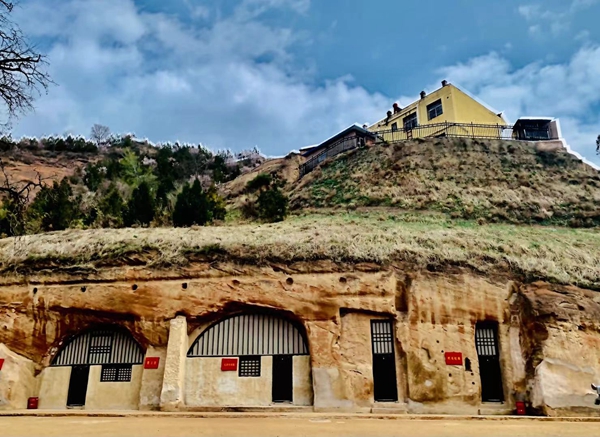
The Bao'an Revolutionary Site's caverns were home to such Communist Party of China leaders as Mao Zedong and remain a place where their and the Party's legacies live on.
Mao and other top CPC officials moved into and renovated these abandoned-and, importantly, bombproof-dwellings in Shaanxi province's Yan'an in 1936 and remained there for seven months. These literal holes in the wall also then served as the headquarters of the People's Government.
It's also where American Edgar Snow, the first foreign journalist to enter red territory, met Mao and took the most-famous photo of the chairman. It was Mao's favorite self-portrait and became one of the world's most reprinted images.
A copy hangs on the wall of Mao's office, which is next to the cavern he lived in with his wife.
The office contains replicas of the stumps Mao, Snow and an interpreter sat on during interviews that sometimes lasted late into the night, arranged around a portable fireplace.
It also houses facsimiles of Mao's chests and writing utensils.
Visitors can also see Mao's kang (an earthen bed heated by burning coal inside) and the small desk of a variety unique to the region created specifically for use atop kang.
He penned some of his most important works there.
About a dozen caves preserve such replicas as wooden cutlery for making buckwheat noodles, bamboo poles for carrying water buckets and clay pots for pickling. Salt used to preserve vegetables had to be carried from neighboring Gansu province on the backs of donkeys.
The only surviving structure that isn't a cave is an earthen hovel that was home to Zhou Enlai, who later became New China's first premier.
The site also hosts the special office for top-secret affairs and its original telegraph machine.
The Sadness Tree grows in the courtyard. It's said that the branches of the locust tree donated by the Soviet Union began to grow downward after Mao died.
Indeed, the Bao'an Revolutionary Site is a place where Mao's and the CPC's legacy from Yan'an's revolutionary period is literally carved in stone.
